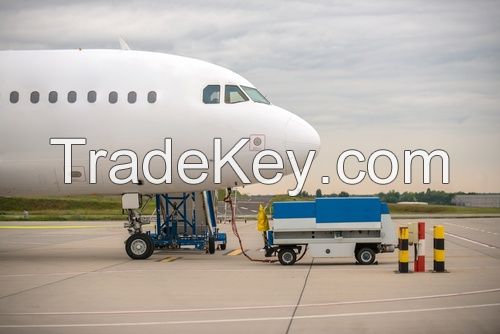
离岸价格
获取最新报价|
Minimum Order
位置:
-
最小订单价格:
-
最小订单:
-
包装细节:
contact us
交货时间:
depends upon the size of the order
供应能力:
-
付款方式:
Other, L/C, T/T
Jp*4
is an abbreviation for Jet Propulsion (JP) and Colonial Grade
*4
During the refining process only *5% of the crude oil is made up of
JP*4 the rest of the grade is used for different types of
byproducts such as plastic.
This was developed by JP Morgan Colonial grade JP*4 was replaced by AVGAS or known as AVGAS**0LL, its the number one low sulfur content kerosene used worldwide.
National standards apply for aviation fuels in many countries including Australia, Brazil, Canada, France, Japan, China, Spain and Sweden.
JP*4 powers gas turbines aircraft engines. Jet A and A*1 have specifications that can be used in fuel worldwide. Jet B is used in cold weather elements.
The most common fuel is an unleaded/paraffin oil-based fuel classified as JET A*1, which is produced to an internationally standardized set of specifications.
In the United States only, a version of JET A*1 known as JET A is also used.
The only other jet fuel that is commonly used in civilian aviation is called JET B. JET B is a fuel in the naptha-kerosene region that is used for its enhanced cold-weather performance.
However, JET Bs lighter composition makes it more dangerous to handle, and it is thus restricted only to areas where its cold-weather characteristics are absolutely necessary.
Jet fuel is a mixture of a large number of different hydrocarbons. Kerosene-type jet fuel (including Jet A and Jet A*1) has a carbon number distribution between about 8 and *6 carbon numbers (carbon atoms per molecule); wide-cut or naphtha-type jet fuel (including Jet B), between about 5 and *5 carbon numbers.
TYPE JET A*1Jet A*1 is a kerosine grade of fuel suitable for most turbine engined aircraft.
It is produced to a stringent internationally agreed standard, has a flash point above *8°C (**0°F) and a freeze point maximum of **7°C.
It is widely available outside the U.S.A. Jet A*1 meets the requirements of British specification DEF STAN ****1 (Jet A*1), (formerly DERD ***4 (AVTUR)), ASTM specification D***5 (Jet A*1) and IATA Guidance Material (Kerosine Type), NATO Code F**5.
TYPE JET AJet A is a similar kerosine type of fuel, produced to an ASTM specification and normally only available in the U.S.A.
It has the same flash point as Jet A*1 but a higher freeze point maximum (**0°C). It is supplied against the ASTM D***5 (Jet A) specification.
TYPE JET BJet B is a distillate covering the naphtha and kerosine fractions.
It can be used as an alternative to Jet A*1 but because it is more difficult to handle (higher flammability), there is only significant demand in very cold climates where its better cold weather performance is important.
In Canada it is supplied against the Canadian Specification CAN/CGSB 3.*3
MILITARY USAGE:JP*4 is the military equivalent of Jet B with the addition of corrosion inhibitor and anti-icing additives; it meets the requirements of the U.S. Military Specification MIL-PRF****4S Grade JP*4. JP*4 also meets the requirements of the British Specification DEF STAN ****8 AVTAG/FSII (formerly DERD ***4),where FSII stands for Fuel Systems Icing Inhibitor. NATO Code F**0.
JP*5 is a high flash point kerosine meeting the requirements of the U.S. Military Specification MIL-PRF****4S Grade JP*5. JP*5 also meets the requirements of the British Specification DEF STAN ****6 AVCAT/FSII (formerly DERD ***2). NATO Code F**4.
JP*8 is the military equivalent of Jet A*1 with the addition of corrosion inhibitor and anti-icing additives; it meets the requirements of the U.S. Military Specification MIL-T*****8D. JP*8 also meets the requirements of the British Specification DEF STAN ****7 AVTUR/FSII (formerly DERD ***3). NATO Code F**4.
